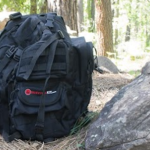Maximize Protein Intake During Survival Situations

We need anywhere from .5-.7 grams of protein per pound of body weight on a daily basis. We get the bulk of our protein from meats and fish under normal circumstances, and legumes or beans provide a vegetable option that is equally beneficial. However, during survival situations, we need to balance our diet and seek out foods that will provide us with amounts that we need to stay fit and healthy.
Many people believe that protein is just for building muscle. While it is true that protein contributes to the development and health of muscle fibers, we also need protein to support many other processes in the body as well. Some examples include nutrients that support skin, tendon and ligament health and regeneration, enzymes that regulate our nervous system and hormones, blood and hemoglobin health, processes that support the immune system along with a host of amino acids that regulate cell activity and metabolism. Proteins are also important for the hair as well as bone health. In a nutshell, we can’t be healthy and strong without having proper amounts of protein in our daily diet.
While it is very easy to get nutrients from fruits and vegetables and carbs from grains and rice, protein is more elusive. We need meat, fish, poultry and legumes. Consequently, it is essential that all of our long-term survival planning involves the procurement and storage of protein so that we can eat enough on a daily basis. The question is how much do we need and where to get a sufficient amount in the field.
Compact Sources

The best option is to choose foods that contain high levels of protein that don’t require a lot of time or energy to obtain. For example, you can spend all day fishing or catching crayfish. However, unless you are catching a large enough quantity or hauling in big fish, chances are that you will have to work very hard to get what you need. The same could be said when hunting for small game. You may be able to get 100 grams of protein from any animal, but how many animals do you need to catch, clean and cook in order to reach that amount?
It’s important to think of not only what food sources are available and how to catch them efficiently, but you should also think about whether or not their benefits are worth the effort. For example, crayfish are a great source of protein and other nutrients. However, you will need to catch, cook and eat dozens of them in order to meet your daily needs. On the other hand, you can hunt a deer, catch a wild turkey or pheasant and get more than enough in a single kill. There’s nothing wrong with picking crayfish or any other kind of animal, even if they don’t have a lot of protein per unit. The trick is to combine sources and diversify in order to have a well-rounded intake on a daily basis.
Farm Animals

The easiest and best way to get protein is by drinking milk from cows or goats. Eggs from chickens and the meat from poultry are also good sources. The benefits of eggs and milk is that they are essentially renewable sources as long as you take care of the animals and keep breeding. On the other hand, you also need to ensure that you have the space and resources to house and feed the animals over the long-term. Keep in mind that cows are the most inefficient source of nutrients out of all of the protein sources that we rely on today. They require a lot more feed and water than other sources that produce similar benefits. Goats, sheep and chicken require less resources but produce similar benefits.
Fish

Fish are some of the best sources of protein and other nutrients in the world. Salt water fish tend to have a few more grams of protein per serving than their freshwater counterparts. However, a pound of almost any kind of fish meat is sufficient enough to give the body its daily protein requirements. Just remember, the smaller the fish or crustacean, the more you will need to catch and eat.
Beans

Legumes are cheap, available in bulk and require minimal effort to store and hydrate when needed. They also provide a condensed form of protein and other nutrients that make them the ideal alternative to meat products. Make sure to stock up on large quantities of beans in your stockpile, and try to grow them whenever possible as well. As long as your survival situation involves staying in a fixed location that you’ve set up for the long-term, beans should be an integral part of your stockpile.
Remember that no matter how you slice it, you need at least 100 grams of protein per day. Make sure that you know how to obtain these amounts before you end up in any given survival situation. This is true whether you hunt, fish, garden or stock up on supplies. Don’t ever underestimate the importance of protein, and always keep an eye out for easy and accessible sources near to where you will be hunkering down. A little bit of research and preparation will go a long way once you are facing a long-term crisis.













